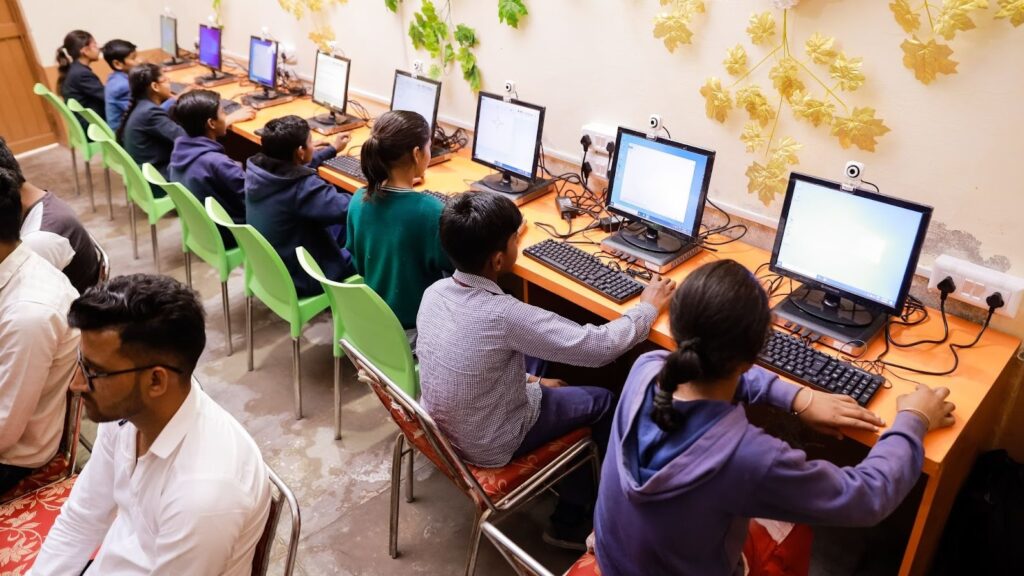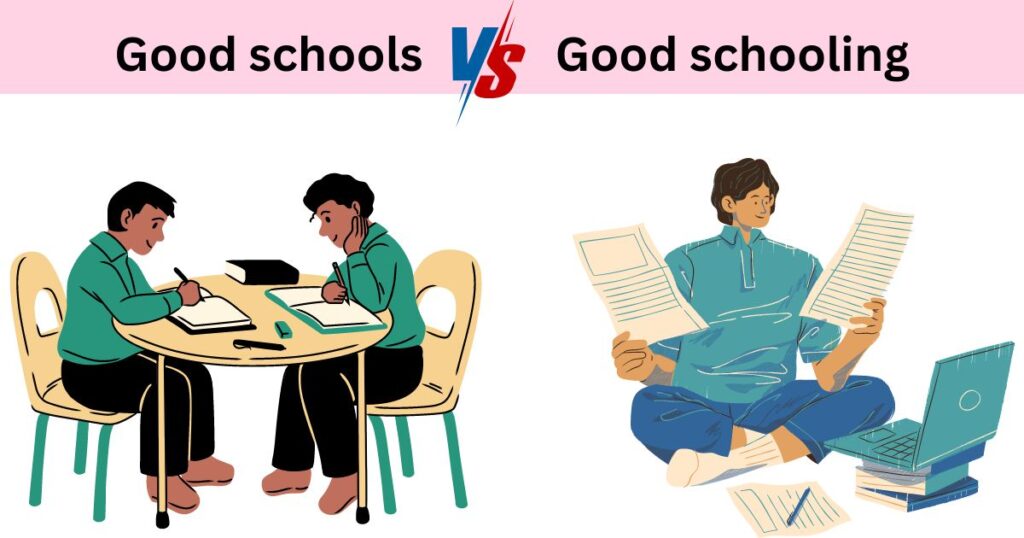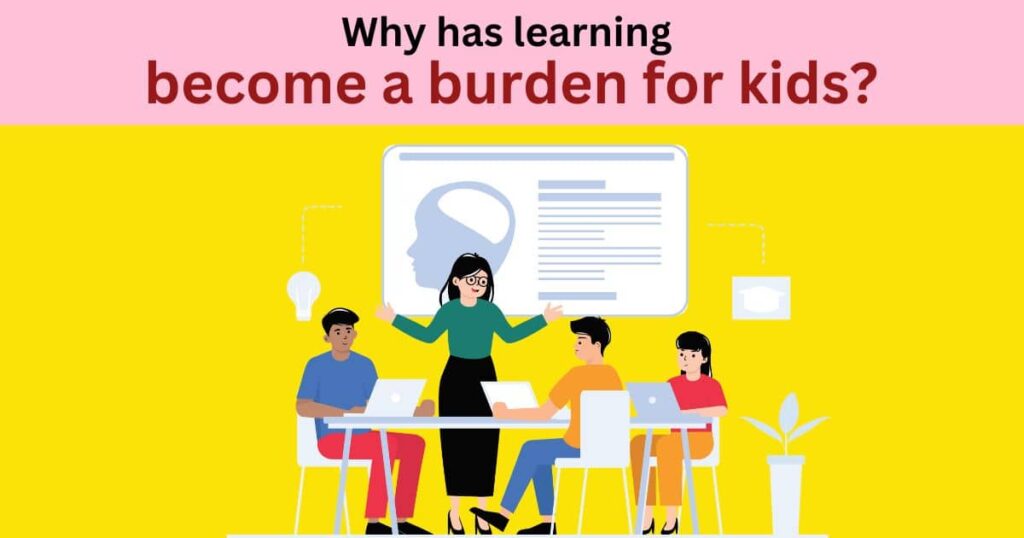How ApniPathshala is Transforming Rural Education in Haryana.

In the quiet village of Sirsa, Haryana, where traditional values often overshadow modern ambitions, the pandemic brought education to still. Students struggled under the weight of increased syllabus, lacked personal guidance, and faced a gap in digital learning. But just when things seemed hopeless, ApniPathshala’s learning pod at the Jivam Foundation stepped in. A light of hope that turned challenges into opportunities and gave students a chance to dream again. The Beginning: Rising from the Ashes The pandemic of 2020 was not just a health crisis, it was a crisis of education. With schools closed and resources scarce, the future of countless children was surrounded by uncertainty. Recognizing the urgency, Jivam Foundation, led by the visionary Ms. Isha Godara, made the bold decision to convert a lifeless ancient building to a digital learning spot. Ms. Godara’s story is as inspiring as the foundation itself. Having completed her education in Alberta, Canada, she could have chosen a life of comfort and opportunity abroad. But her heart was rooted in Haryana, where she saw the potential to make change. Her decision to return home and create the Jivam Foundation shows her commitment to transforming the community through education and empowerment. “The building was locked and forgotten” shared Mr. Vikas Sheron, the coordinator of the learning pod. “We faced accusations from the villagers who called us frauds and doubted our intentions. But we didn’t stop, driven by the belief that education is the most powerful weapon for change.” Every essential like lighting, furniture, and Wi-Fi was set up with great effort. Despite the challenges and resistance, the foundation moved forward. Because of the vision. The dream of creating a welcoming space where students could grow and succeed. The Transformation Mr. Vikas Sheron, who joined the foundation in 2021, never imagined himself as a teacher. “I didn’t like teaching at first,” he admitted. “It wasn’t something I saw myself doing. But life brought everything together, and now I love it. The bond I share with the students is beyond professional, it’s personal, like a family.” What began as a small effort soon grew into a lively hub of digital learning and empowerment. From 8 a.m. to 4 p.m., students preparing for competitive exams come and sit in the learning pod & study together in a community. By late afternoon, the space transforms into a welcoming spot for younger children from grades 5 and 6, eager to learn after school. The journey wasn’t easy. One of the toughest challenges was changing societal mindsets. “In villages across Haryana, especially here, daughters weren’t allowed to study. Convincing parents to let their daughters join us wasn’t easy,” Mr. Sheron said. Yet, with time and persistence, the narrative changed. “Today, 70% of the students in our pod are girls, and they actively participate in programs and stage events,” he added with a sense of pride. A Partnership for Progress: Apni Pathshala’s Role The arrival of ApniPathshala brought a remarkable transformation to the learning pod. By donating us computer systems, it opened up a new world for students who had never even touched a computer before. “Thanks to ApniPathshala, our students have gone from having no digital learning exposure to mastering advanced skills,” shared Mr. Vikas. “It’s amazing to watch their confidence and abilities grow.” The impact is undeniable. Many students from the pod have successfully secured positions in various competitive fields, proving that their hard work and the support they received paid off. But the pod is more than just a place for academics. It’s a space where children develop life skills, resilience, and the courage to dream big. A Moment of Pride On the foundation’s first anniversary, the learning pod’s achievements were celebrated with a visit from Savita Poonia, the captain of the Indian Women’s Hockey Team. Her presence was more than just motivational, it was proof to what happens when passion meets perseverance. “She motivated us and appreciated our efforts,” Mr. Sheron recalled. “It was a moment of pride not just for the foundation but for the entire village.” Building Bonds, Changing Lives The foundation of the pod’s success is the special bond between the students and their teachers. “Learning is never one-way,” Mr. Sheron shared. “We learn something new from our students every day. Their feedback is incredibly valuable and pushes us to keep improving.” The pod is about so much more than academics. It’s a place where confidence is built, curiosity is nurtured, and opportunities are created for those who had none. Parents who were once unsure now stand as strong supporters of the initiative, attending PTMs and engaging actively with the teachers. A Legacy of Hope and Inspiration ApniPathshala’s learning pod at Jivam Foundation stands as proof of what’s possible when compassion meets commitment and when people dare to challenge societal norms for the greater good. This pod is not just reshaping rural education, it’s rewriting life stories, particularly for young girls in a community that once hesitated to support their dreams. Today, these same girls step onto stages with confidence, participate in programs, and walk on paths once considered impossible. This transformation reflects a powerful truth: when people come together with a shared purpose, obstacles disappear, and opportunities multiply. From an abandoned, crumbling building to a living hub of learning, the journey of this pod proves that even the smallest steps can create monumental change. It reminds us all that determination and collective effort can light the path to a brighter, more inclusive future. As the learning pod continues to grow, its story serves as an inspiration to dream big, work hard, and believe in the life-changing power of education. This isn’t just a story of success, it’s a call to action. Each one of us has the power to contribute to a world where every child gets the chance to learn, grow, and achieve their full potential. Be Part of the Change! ApniPathshala believes in creating more stories like this. Stories where education wins over adversity and dreams are given the
Good Schooling vs Good Schools

Ever wonder what really makes a school great? Is it the teachers, the buildings, or something deeper? What if it’s the values and life skills taught there? When choosing for your child, should you focus on good schooling or good schools? Let’s break down why both matter and how they play different but essential roles in a child’s education. What role does Good Schooling play? Think about the difference between just knowing facts and actually understanding the world around you. Good schooling isn’t just about memorizing dates and formulas; it’s about teaching students how to think critically. Imagine a classroom where kids are encouraged to ask “why” and “how” instead of just accepting information as it is. When students learn to think this way, they don’t just learn—they start to love learning. This kind of curiosity and problem-solving mindset sticks with them for life, helping them navigate all sorts of challenges, both in and out of the classroom. Good schooling is like a garden where every student can grow in their own way. It’s not just about grades and test scores; it’s about helping each child discover who they are. Schools that focus on the whole child provide a variety of activities—like sports, arts, clubs, and more—so that students can explore different interests and find what they’re passionate about. This personal growth isn’t just a nice-to-have; it’s crucial. When kids find what they’re good at and what they love, they build self-esteem and a strong sense of identity. And that’s what helps them confidently take on life’s challenges. Think about the difference between just knowing facts and actually understanding the world around you. Good schooling isn’t just about memorizing dates and formulas; it’s about teaching students how to think critically. Imagine a classroom where kids are encouraged to ask “why” and “how” instead of just accepting information as it is. When students learn to think this way, they don’t just learn—they start to love learning. This kind of curiosity and problem-solving mindset sticks with them for life, helping them navigate all sorts of challenges, both in and out of the classroom. Teachers are the heart of any school, and good schooling recognizes just how important they are. Imagine a school where teachers aren’t just doing the same thing year after year but are constantly learning and improving. Good schooling invests in professional development for teachers, giving them the latest tools, techniques, and knowledge to bring into the classroom. When teachers grow, so do their students. This ongoing training means that students receive top-notch instruction that’s always evolving with the times, making sure they’re getting the best education possible. No two communities are the same, and good schooling understands that. Imagine a school that doesn’t just follow a one-size-fits-all approach but instead tailors its programs to fit the unique needs of its students. Whether it’s adjusting the curriculum to better reflect students’ cultures or introducing new subjects that match the interests of the community, good schooling is flexible and responsive. This adaptability makes learning more relevant and engaging for students because they see themselves and their world reflected in what they’re studying. It’s not just about teaching them facts; it’s about making sure those facts matter to them. What role does Good School play? Good Schools understand that the concept of education is about more than just academics and emphasises on holistic development of students. They offer programs on life skills, social-emotional learning and character development. which encourage students to develop into individuals who are prepared for the challenges of life. By treating students respectfully and teaching the value of self-esteem and self-worth, a good school provides a supportive environment where students feel safe and valued.This includes treating students with kindness, understanding their needs and providing a safe space for learning Good Schools are committed to the well-being and health of their students. This means providing a safe environment and addressing the physical and mental health needs of students. This includes providing nutritious meals, ensuring a safe environment, and addressing the physical and mental health needs of students. When students are in perfect health, they are better able to focus on their studies and thrive in school Why do Good Schooling and Good Schools Matter for Children? Combining good schooling with good schools creates a balanced approach to education that provides the educational practices and philosophy that promote student growth and adaptability. Good schools offer a supportive environment that helps students succeed which makes sure that students receive a high-quality education that prepares them for the future. We, at Apni Pathshala, believe in the importance of both good schools and good schooling. By encouraging responsible individuals to step up as educators of tomorrow, we encourage the establishment of micro-schools, homeschools, and alternative learning classrooms. Our goal is to establish self-sustainable educational programs that equip students with essential technical and digital skills and enhance academic performance by providing resources Why Apnipathshala Stands Out? Apni Pathshala encourages community leaders, teachers, and passionate individuals to create educational programs that reflect the needs of their communities. Apni Pathshala’s decentralized model allows for flexibility and adaptability, ensuring that education is tailored to the students it serves with the establishment of PODs,micro-schools, homeschools and alternative learning environments By providing students with access to computers and digital resources, Apni Pathshala places a strong emphasis on learning digital literacy and technical skills. This focus on technology makes sure that students are prepared for the digital world and have the skills they need to succeed. Apni Pathshala provides ongoing support and monitoring to ensure the success of its programs. By collecting weekly updates and video feedback from students, Apni Pathshala can provide tailored support and guidance to address specific needs and challenges. This approach ensures that educational programs are continuously improving and effective Conclusion: The Importance of Good Schooling and Good Schools Addressing the whole child and providing a supportive environment in the form of good schooling and good school helps students thrive as individuals. Combining the principles of
How Learning Pods Can Transform Education in India

Understanding why learning feels like a burden to kids today is really important. If we know what’s causing our kids to feel this way, we can find ways to make learning enjoyable again. It’s not just about getting good grades; it’s about helping kids love learning and feel good about going to school. Going to school used to be tiring earlier as well, but why has it changed over the period of time? Why has it become more toxic? Why have kids started to hate school? According to a report by the World Economic Forum, the current education system was founded at a time when industries needed workers. Back then, workers needed a relatively fixed set of skills and knowledge to do well. In today’s era, this “fixed” mindset is losing its relevance. We are in an era where adaptability and innovative thinking are of most value. Kids today feel a lot of pressure from both parents and teachers to do well in school. Imagine being told over and over again that you have to get the best grades or be at the top of your class. This constant pressure can make kids feel really stressed out and worried about disappointing the adults in their lives. When we talk about the early 90s, kids didn’t feel this pressure. They felt satisfied if they got above 60% in the class. But now the education system has changed how parents, students and teachers think about education and grades. Schools can sometimes feel like a big competition. Kids often compare themselves to their classmates, and there’s a lot of focus on who gets the highest marks or who is the best in different subjects. This competitive atmosphere has made learning feel like a race rather than a fun journey. When the bar is set so high, kids start feeling overwhelmed. High expectations from parents, teachers, and even themselves can lead to a lot of stress and anxiety. They might worry about failing or not being good enough, which takes away the joy of learning and replaces it with fear and pressure. Let’s discuss the reason behind this. Loss of engagement and interest Another reason kids lose interest in school is because it can be really boring. Many schools still use old teaching methods like long lectures and reading from textbooks. Imagine sitting through that without much interaction or fun activities. It’s no wonder kids feel disconnected from what they’re learning. On the other hand, social media, YouTube, and other online content are super engaging and exciting. They grab kids’ attention easily with videos, games, and interactive content. Kids are used to these fun and fast-paced experiences online, so traditional classroom methods just can’t compete. When learning feels like a chore, it’s hard for kids to stay motivated. They need more hands-on activities, group work, and interactive lessons to keep them interested. Schools need to step up and make learning as engaging as the content kids love online. This way, education can be more fun and effective, helping kids stay connected and excited about what they’re learning. Rote Learning vs. Creative Learning Rote learning, where kids just memorise facts without really understanding them, is another problem. It’s like cramming for a test, vomiting everything during the test and then forgetting everything right after. On the other hand, creative learning, which involves exploring ideas, asking questions, and solving problems, is much more engaging. When kids get to be creative, they’re more likely to enjoy learning and remember what they’ve learned. Sometimes, what kids learn in school doesn’t seem to relate to the real world. They might wonder, “When will I ever use this in real life?” If the curriculum doesn’t show how subjects like maths, science, or history apply to everyday life, kids can feel like what they’re learning is pointless. Making connections between school lessons and real-world applications can help spark their interest and make learning more meaningful. School curriculum with added pressure of competitions: Imagine coming home from a long day at school only to face a huge pile of homework. For many kids, this is a daily reality. When there’s too much homework, it can feel overwhelming and exhausting. Instead of having time to relax and recharge, kids are stuck doing schoolwork all evening. While homework alone might not be too much, the real problem starts when you add in competitive exams and coaching classes. Many kids attend extra coaching sessions after school, and these come with their own set of homework and pressure. So, it’s not just school and homework anymore—it’s school, homework, coaching classes, and the homework from those coaching classes. This combination can be incredibly toxic and overwhelming. With so much on their plates, kids often have very little time left for rest or fun activities. Things like sports, hobbies, or just playing with friends are important for a balanced life, but when the curriculum is overloaded with extra coaching, these activities get pushed aside. This lack of downtime can make kids feel burnt out and less excited about learning. All this stress and lack of free time can really take a toll on kids’ health. Physically, they might not get enough exercise or sleep, which are crucial for growing bodies. Mentally, the constant pressure and lack of relaxation can lead to anxiety, depression, and other issues. It’s important for kids to have a balanced lifestyle where they can enjoy learning without it harming their health. Can learning be made interesting in any way? Definitely, every problem has a solution. One way to make learning less of a burden is to focus on holistic education. This means looking at the child as a whole, not just their academic performance. Schools can emphasize the importance of social skills, emotional well-being, and physical health alongside traditional subjects. When kids feel cared for in all aspects of their lives, they are more likely to enjoy learning and do well. Using Technology to bridge the gap: Technology can be a great tool
Transforming Rural Education: The Journey of Apni Pathshala

Unlocking potential through peer learning: where students thrive and grow together.
